Introduction
Recently I read a book about new rocket and satellite advancements by Ashlee Vance: “When the Heavens Went on Sale” (Ref.1). This got me very excited and I decided to see if I could receive current Amateur Radio or University Cube Satellites.
Equipment Setup
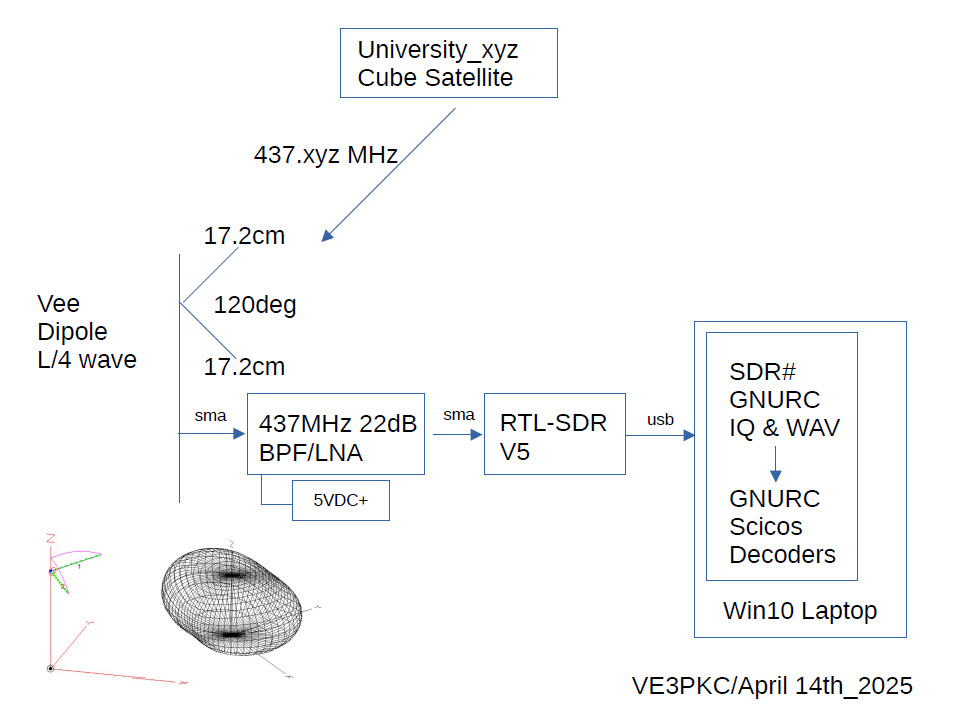
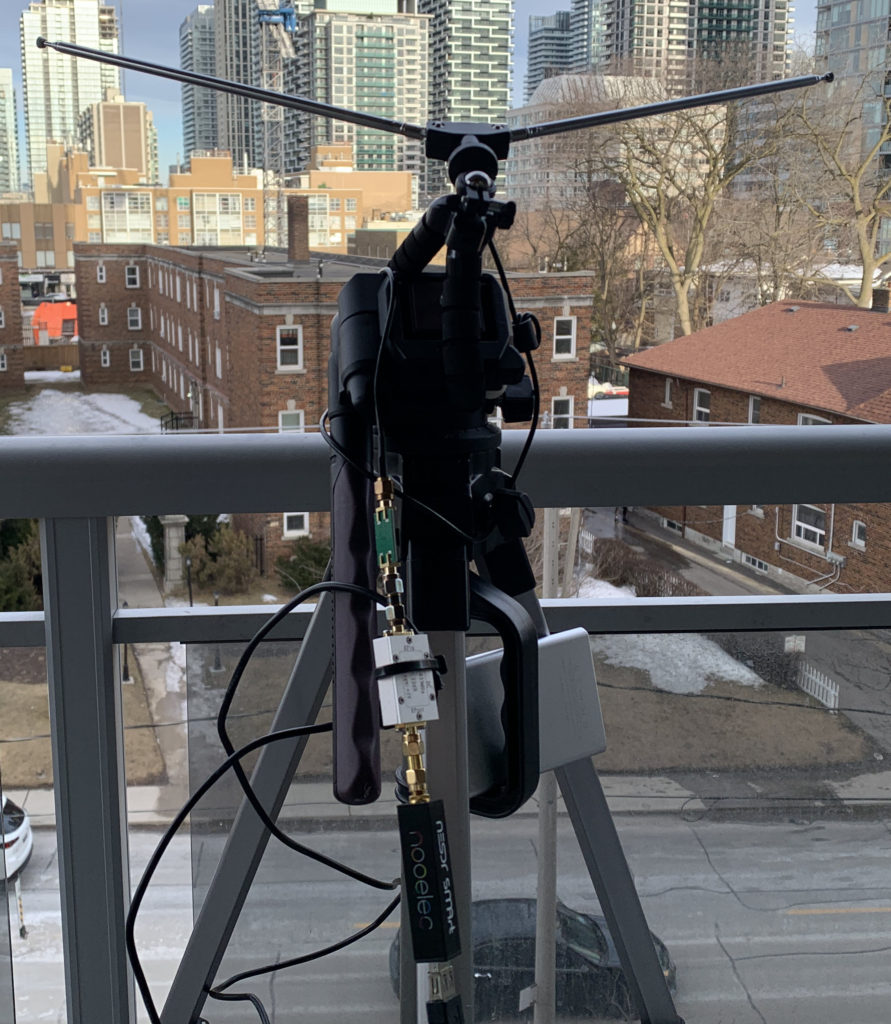
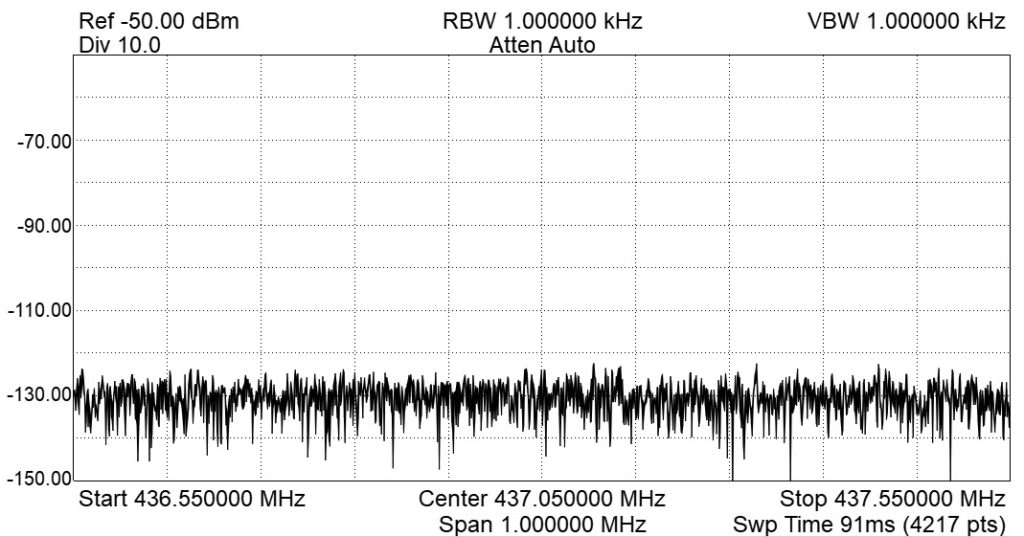
Figure 1 shows the equipment setup. I decided to copy the method I used to receive NOAA15/18/19 transmissions. Signals are received on a Vee dipole tuned to 437MHz and then pass directly to a BPF/LNA located at the back of the antenna. Fig.2 shows the Vee Dipole + BPF + LNA (Ref.2/3). This then feeds an RTL-SDR V5. Signals are recorded as IQ & WAV files using SDR#/GNURC, then decoded by several methods depending on the modulation: GNURC and Scicos.
Reception Planning
| PD Km Path Distance | Lfs Free Space Loss dB | Rx Level dBm | SNR dB |
| 500Km | 139.2dB | +10=-129.2dBm +15=-124.2dBm +20=-119.2dBm | 0.8dB 5.8dB 10.8dB |
| 1000Km | 145.3dB | +10=-135.3dBm +15=-130.3dBm +20=-125.3dBm | -5.3dB -0.3dB 4.7dB |
| 1500Km | 148.8dB | +10=-138.8dBm +15=-133.8dBm +20=-128.8dBm | -8.8dB -3.8dB 1.2dB |
| 2000Km | 151.3dB | +10=-141.3dBm +15=-136.3dBm +20=-131.3dBm | -11.3dB -6.3dB -1.3dB |
| 2500Km | 153.2dB | +10=-143.2dBm +15=-138.2dBm +20=-133.2dBm | -13.2dB -8.2dB -3.2dB |
| 32.44+20log(F_MHz) +20log(PD_Km) | TxPwr=10dBm TxPwr=15dBm TxPwr=20dBm |
Let us consider path parameters for various possible transmit powers (Ref.4). Figure 3 shows a scan of 437MHz showing an average receive noise level of -130dBm. Figure 4 shows Lfs Free Space Path Loss for different transmit levels of 10dBm, 15dBm and 20dBm. For a typical pass over slant range of 1000Km the SNR is only 4.7dB at 100mW. This is why I added an BPF/LNA of G=22dB. Not only does it have gain but also low pass filtering 380-480MHz. I find a BPF is essential with the RTL-SDR as it gets overloaded easily. The LNA gain is not included above.
EIRSAT-1 Cubesat Details
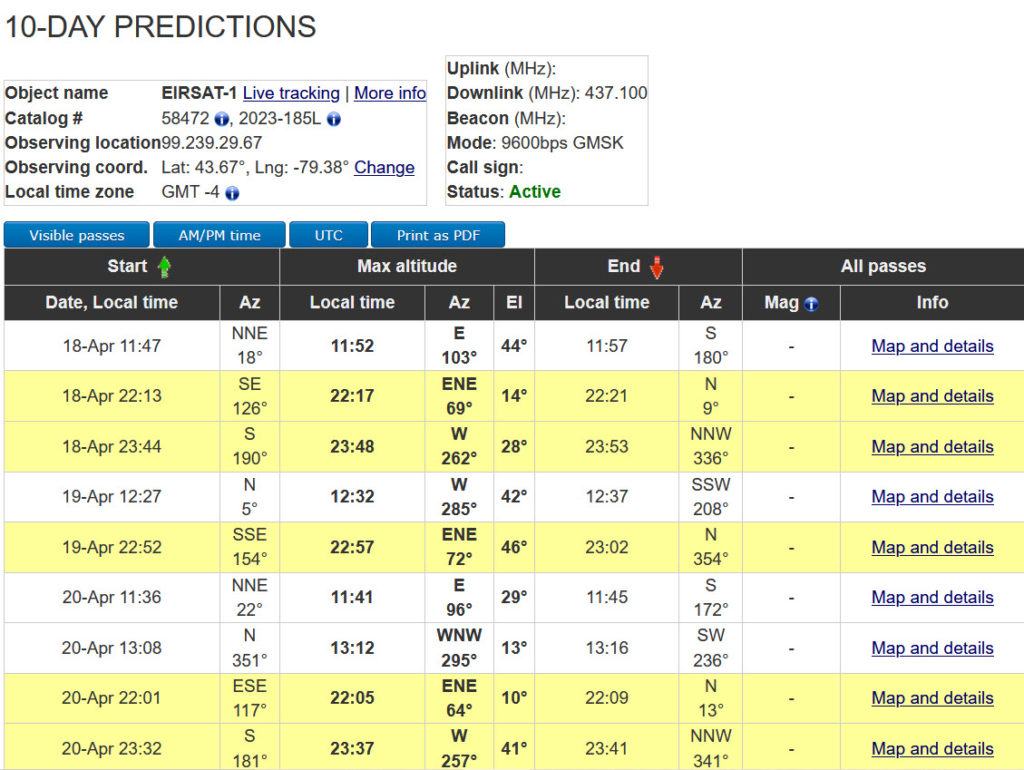
In order to chose a possible Cubesat for reception, I checked a Wikipedia database for recent cubesat launches (Ref.5). The latest in the data base was EIRSAT-1 a 2U launched on Dec1st 2023. In order to track the LEO satellite, there are several excellent databases such as N2YO (Ref.6), Gpredict (Ref.7) and SatNogs (Ref.8).
EIRSAT-1 Reception
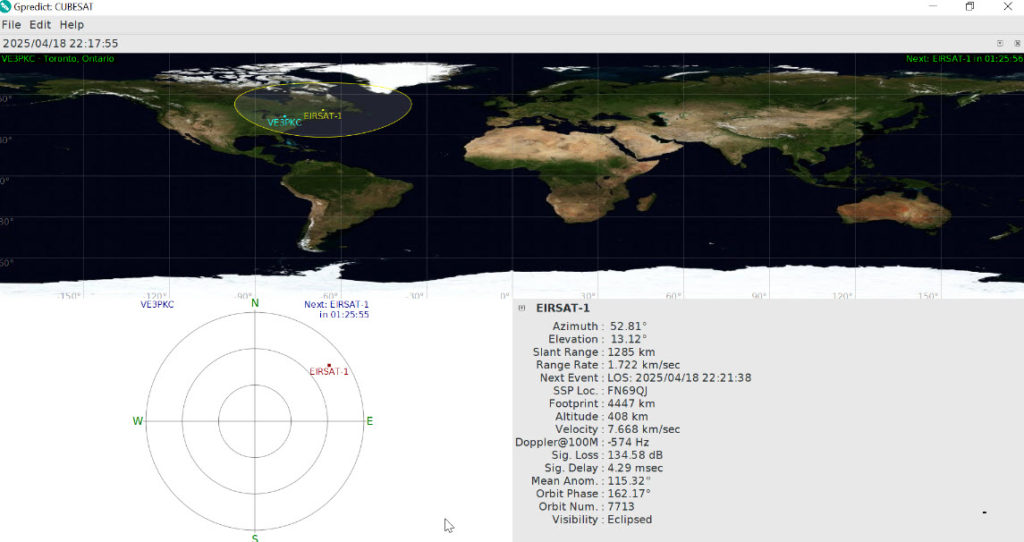
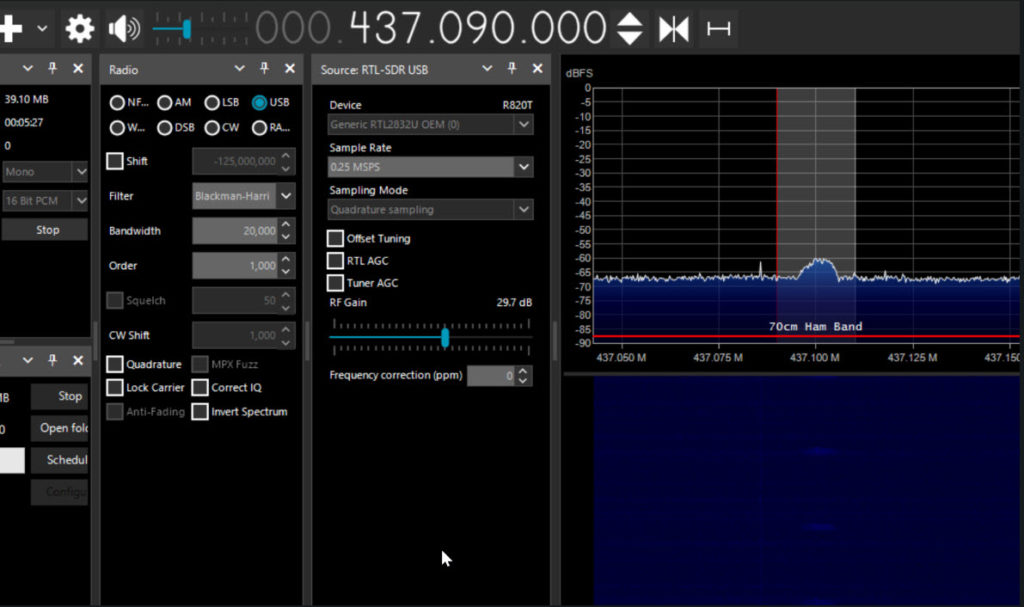
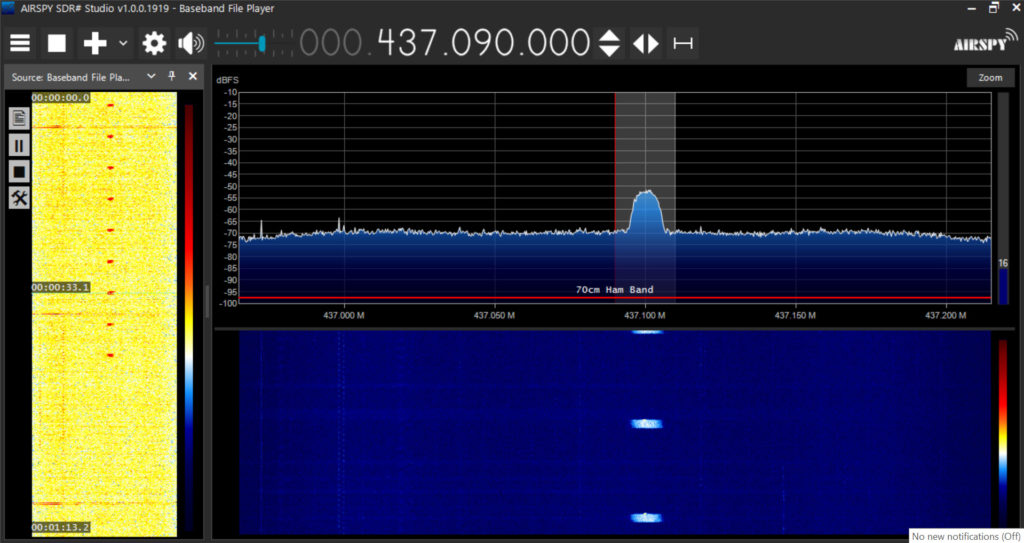
My first try was the April18th_2025_11:47 pass as shown in N2YO 10day prediction. I noticed 2 in-channel bursts during the reception window, but I didn’t have the recorder on, the bursts were only 1-2 secs long. Later on in the day at 22:18 I had both IQ/WAV recorders on and I received several pulses as shown in Figure 7. This looks like a GMSK burst! (Ref.9). However last night April 20th at 21:31, I received several strong pulses on frequency but 30min before EIRSAT-1 was due to pass over, so looks my reception earlier was a coincidence and not EIRSAT-1. So I will try to decode these signals and determine the source. More to come in next post.
GNU Radio Companion Basics Course
/Please send your comments, questions and suggestions to:
contact:

References
#1. – “When The Heavens Went on Sale”, Ashlee Vance
https://www.amazon.ca/When-Heavens-Went-Sale-Geniuses/dp/0062998870/
#2. – “NanoVNA for 433MHz/70cm BPF/LNA Testing”
https://jeremyclark.ca/wp/telecom/nanovna-for-433mhz-70cm-bpflna-testing/
#3. – “NanoVNA for 433MHz/70cm LNA Testing”
https://jeremyclark.ca/wp/telecom/nanovna-for-433mhz-70cm-lna-testing/
#4. – “Power Budgets for CubeSat Radios..”
https://www.researchgate.net/publication/318067625_Power_Budgets_for_CubeSat_Radios_to_Support_Ground_Communications_and_Inter-Satellite_Links
#5. – “List of Cubesats”, Wikipedia
https://en.wikipedia.org/wiki/List_of_CubeSats
#6. – “N2YO Satellite Database”
https://www.n2yo.com/
#7. – “Gpredict Satellite Database”
https://oz9aec.dk/gpredict/
#8. – “SatNogs Database”
https://db.satnogs.org/
#9. – “AIS GMSK Modulator – Scicos Simulation”
https://jeremyclark.ca/wp/nav/ais-modulator-scicos-simulation/
